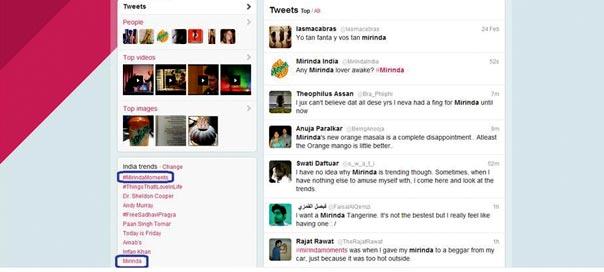Brands are now posting subtle messages on social media. But is engaging audiences through social messages imperative to a brand’s success on social platforms, especially Twitter? Rahul Dubey explores…
In the last four weeks, a new trend has emerged on social media broadcaster Twitter. Almost every aware Indian on Twitter attaches the symbol # (hashtag as the Twitterati calls it) with SatyamevJayate on Sunday. In the last few weeks, a journalist tweeted, “Why does the nation suddenly wake up for a social revolution every Sunday at 11 am?” On weekdays, populist news stories and celebrities make it to the top on Twitter trends. Not surprisingly, events like Anna Hazare’s fast-unto-death and Sharad Pawar’s slapgate were some of the most popular messages on Twitter. Usually, the most popular words on Twitter attract maximum attention, most of which are a byproduct of the top headlines of the day. As a result, brands are finding it difficult to spread their messages even when social media spends are disproportionately high.
Until recently, apart from search, banner advertisements were the most convenient way of advertising online, but that trend is changing now. After a few brands went viral on social media websites with little effort, almost all popular brands are deliberately creating interactive ads and messages to initiate discussions. While Facebook continues to remain both a visual and messaging platform, Twitter is predominantly a messaging platform with evolving applications for sharing pictures and videos. “Therefore, advertisement on digital media is not just about banner ads anymore. Engaging consumers through right messages is extremely crucial,” explains Yashraj Vakil, COO, Red Digital, a leading social media marketing agency that recently generated Tweetmob for PepsiCo’s beverage product Mirinda. Its PagalPanti campaign attracted many new followers in February this year. The brand reach was five times of what the first Tweetmob generated. Tweetmob is a flash of mob in the digital space, usually by a brand that tries to spreads its message with specific tags in a specific time period. Many times, this is done through an indirect, social message that connects the audience to a current happening. #JagoRe, #IFeelUp, #NoCorruption are few messages that were initiated by brands. FMCG brand Hippo was also one of the most-talked about names this year during the Indian Premier League when it posted a funny word for each city, such as Aloo Chat for Delhi, just before the match started.
While direct brand messages and slogans have failed on Twitter in the past, in times of crisis, some brands also received flak on social media when their operations failed to resume. “After major technical snags, brands like Airtel and BlackBerry were quick to respond to each query on Twitter because if the negative opinion goes viral, then it permanently remains on social media and no brand can afford to do that,” says the CEO of a social media agency. A myth that has prevailed for long in digital marketing is that Twitter provides relatively fewer options to advertise. But this myth is becoming irrelevant. As users of Twitter bombard timebound messages with tags, the brand snowballs into a larger online campaign, which sometimes goes on for a period longer than expected by the agency. The other advantage of Tweetmob is its quick measurable nature. Marketers are able to see and measure the success of a campaign minute-by-minute.
Satyamev Jayate: Social media television
After Anna Hazare’s fast in August last year, Satyamev Jayate was perhaps the only event that consistently dominated social media, especially Twitter. Though there was no aggressive social marketing plan for the show, it became a big hit on Twitter.
History: The Greatest Indian campaign
The Greatest Indian was recently one of the most discussed topics on Twitter. #TGI and #TheGreatestIndian was trending in India on No. 1 and No. 3 positions respectively. The initiative is based on the series featured on BBC called ‘The Greatest Briton’, and will start a debate on who is the greatest Indian after Mahatma Gandhi. Discussions multiplied the volume of tweets.
Hippo: Indian Food League campaign
While many brands stayed away from initiating campaigns during IPL this year, anticipating that it will possibly be suppressed by cricket fever, Hippo ran one of the most successful social media campaigns of the year during the tournament with funny messages that started trending.
Mirinda: The PagalPanti campaign
The Tweetmob around Mirinda started with a simple question asking people what they thought was crazy enough around them to be called PagalPanti. Red Digital helped connect Twitterati and Facebook users who tweeted about the topic with various Mirinda branded hash tags. #PagalPanti was soon trending in India. Every 50 tweets with #PagalPanti helped the brand reach 7,990 people generating close to 0.6 million views.
Reebok: ‘Flex a move’ campaign
Reebok recently generated discussions on social media for its ‘Flex a move’ campaign. The idea behind the campaign was to communicate the concept of fitness revolution through social media to attract the youth. More than 250 dancing videos were collected in just three weeks. It was a first of its kind online flashmob that generated buzz on social media for a long time.
Feedback: rahul.dubey@exchange4media.com























